[Part 2] World’s Most Famous Symbols And Their Unknown Stories
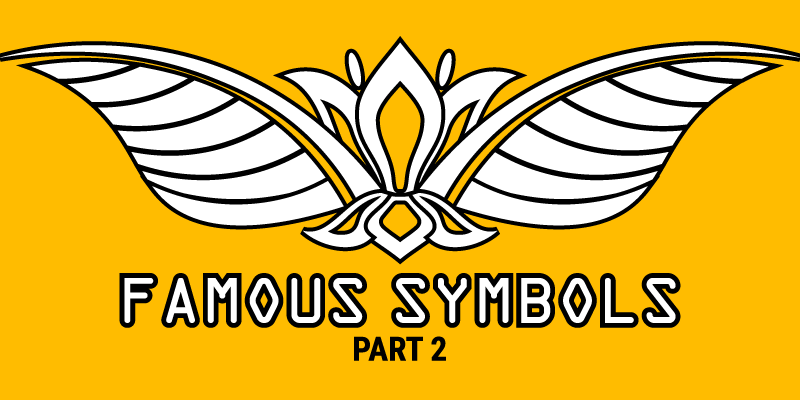
Featured image: Freepik.com
Welcome back to the second edition of the world’s most famous symbols and their interesting but unknown (or lesser-known) stories.
In the first part, we talked about origin stories of famous symbols such as the heart, the peace sign, and the V symbol of victory. We also talked about the lore concerning the Anarchy symbol, the Celtic Knot, and the duality of Yin and Yang sign.
This time, we will explore some other interesting symbols, such as the Pentagram, the Jesus Fish, and the power sign among others.
1. The Ampersand
The ampersand has been quite a busy symbol over the centuries. It is not only a symbol but an actual linguistic character that means something quite enduring and solid. Also, it not only represents an actual word but is also a combination of two unique letters. If that is not all, consider this: there was a time, not too long ago, when ampersand was a part of the English alphabet and there were actual rhymes that helped children learn the alphabet including the ampersand.
So how come one symbol can be all those things? Let’s peel it layer by layer.

Essentially, the ampersand is a symbolic linguistic character that means the conjunction ‘and’. It is also a ligature, meaning a unique combination of two or more letters. The letters it represents are ET from Latin that mean ‘and’. Early typographers and writers, especially the Romans, used cursive/joined writing and the letters ‘et’ evolved to form the symbol &. In modern times, it is still sometimes used to symbolize ‘etc’ as ‘&c’.
But how did ‘et’ came to be known as ampersand? Well, unlike the origin of the shape of the symbol, the history of its name can be easily traced. Remember we talked about & being part of the alphabet? Well, in the early 19th century, the English alphabet didn’t end with Z. It continued to include & and a few more letters/sounds that did not have the endurance or durability of &.
While & was not a sound but an actual word, kids found it weird to continue speaking the alphabet like X, Y, Z, and; it did not feel right. So schools, teachers, and students all started using the Latin expression per se (meaning ‘by itself’) right between Z and ‘&’. So, the phrase would read ‘…X, Y, Z, and per se and’.
As you can probably guess, with enough kids repeating ‘and per se and’ with enough vigor and in various sounds, the phrase soon transformed into the uniquely modern word/name ‘ampersand’. Thanks, kids!
And while the ampersand may have lost its stature as part of the official alphabet, it nonetheless retains the unique honor of being one of the only ancient symbols of typography that have survived generations and centuries and still thrives as a modern glyph. From part of corporate brand logo names (Johnson & Johnson) to being part of important conceptual titles (R&D, P&L, B&B), the ampersand is everywhere, and it’s here to stay.
Ampersand Design Inspirations

Image Source: Behance.com/Hopersand
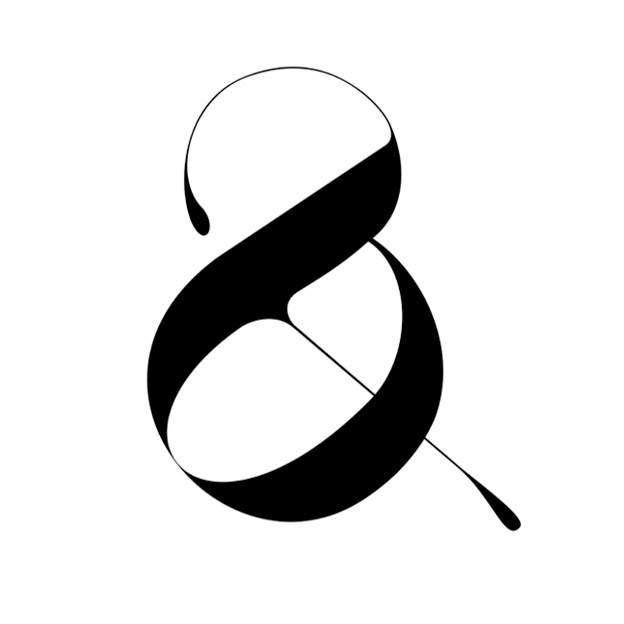
Image Source: Behance.com/Moshik Nadav Typography
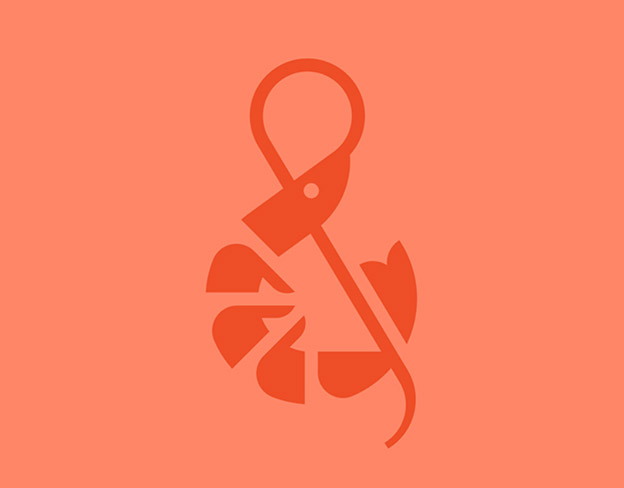
Image Source: Dribbble.com/Shrimpersand
2. The Pentagram
The pentagram is an mysterious symbol. It stands for Jesus, for Satan, for magic, for mathematics, for earthly elements, and even for Pagan religions. Its meanings varied, depending on who you ask. Since we are here to talk about its origin, we are not going to take any sides. So get ready to read some interesting information.
Now, from the outside, the pentagram is a simple five-pointed star with all of its lines intersecting at perfect angles. Mathematically, each of its angles gives us the same value. This makes the pentagram a truly beautiful and harmonious mathematical symbol. The harmony doesn’t end here, though. The part inside the pentagram, its center, is called the pentagon. The pentagon also has five sides and it allows you to create a pentagram if you just keep extending the lines till they intersect. Alternatively, you can also draw a pentagram by drawing lines inside of the pentagon, from one corner to the next. If that wasn’t enough, the pentagram also gives us a special number – something that mathematicians call the ‘golden ratio’ – 1.618. If you have drawn the perfect pentagram, each of its length would give you the perfect score of 1.618.
It is perhaps this accuracy and harmony of the pentagram that each of the groups we have discussed above has tried to adopt it as their symbol. However, the groups most successful in this endeavor have been the modern Wiccans, the satanic cults, and the devil worshippers – or so the modern entertainment, literature, and Internet tell us.

Long before the pentagram was the symbol of the devil, however, Christianity had tried to adopt it as its own by assigning each of the 5 points of the stars to the five wounds inflicted upon Jesus Christ when he was crucified. Long before that, the ancient earth religions, such as Pagans, considered it a representation of protection from evil. Taoism, an ancient Chinese philosophy considers Pentagram a representation of the five essential elements: earth, water, wood, fire, and metal. Wiccans also used the pentagram to mean something very similar to it.
And this begs the question: if the symbol in religious association logos hold sacred value then how come it came to be viewed as a negative symbol of modern times.
Well, according to the writer Dan Brown, when Christianity took over Rome, it initially tried to adopt a lot of Pagan symbols – including pentagram which in Paganism was the sign for the sacred female – to convince people that the new religion wasn’t that different. So while early Roman Catholics did take the pentagram to mean a sign of Jesus’ crucifixion, the religious intolerance of the later years started depicting the symbol as a sign of the devil. Eventually, in the 19th century, satanic occults and devil worshippers started using the symbol (with a goat’s head inside) as their official mark and it became the modern symbol of evil and the devil that we know from media and sensational books today.
Pentagram Design Inspirations
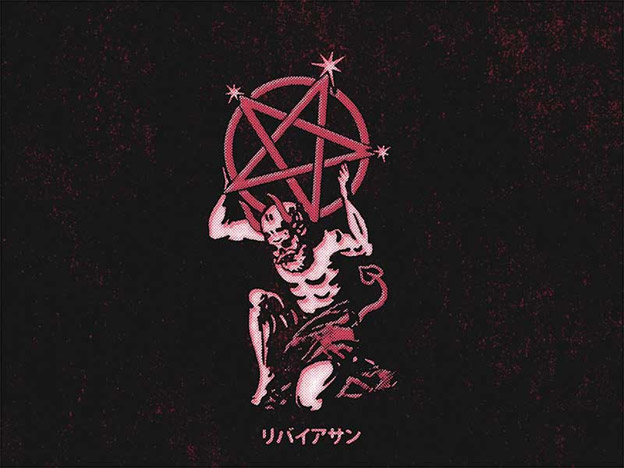
Image Source: Dribbble.com/Corey Thomas
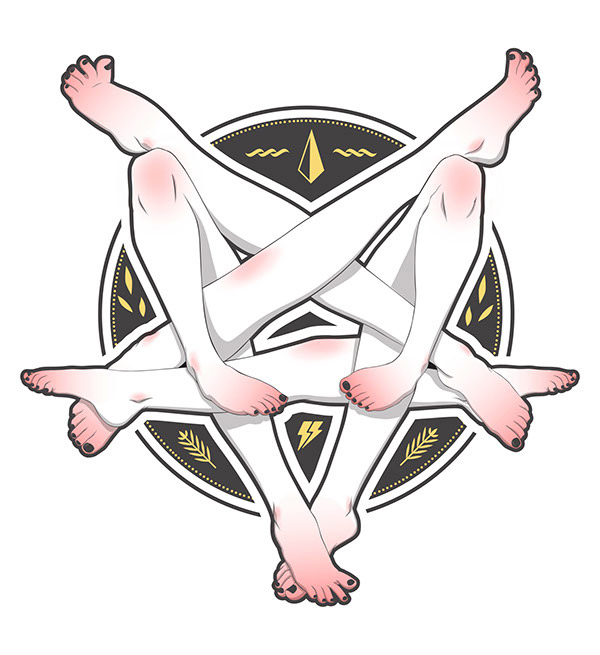
Image Source: Dribbble.com/Sergio Saucedo
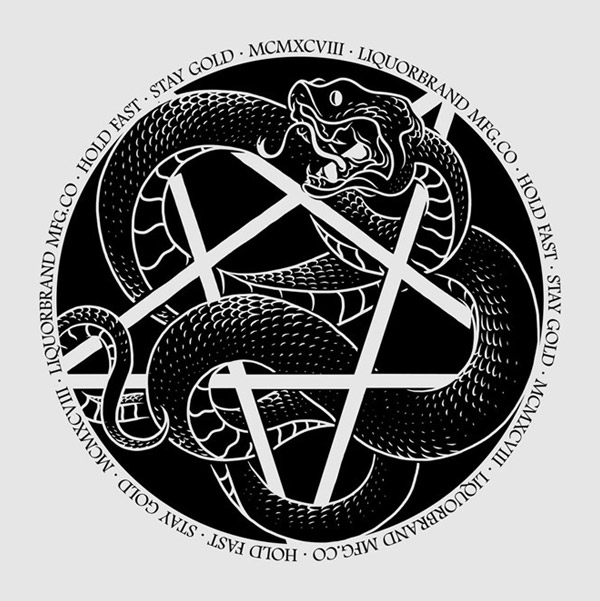
Image Source: Dribbble.com/Miguel Fonacier
3. The Double-headed Eagle
If you’ve read so far, you probably have been accustomed to expect every ancient symbol to contain at least one outlandish and uniquely sensational tale. It’s time to dispel all such notions. Sometimes, a symbol is just a symbol – representing something quite normal.
Well, only if your definition of normal contains connotations of superiority, strength, and dominance. Because the double-headed eagle represents just that.
Actually, strike that. It’s the eagle that represents strength, dominance, and all that. The double-headed eagle is just an augmentation of it. Like, two are better than one.

Since the earliest times, the powerful have chosen the eagle as their representative icon. Greek mythology tells us that the Zeus once sent two eagles from two corners (east and west) of the world to determine the center point of Earth. The mythology regards eagles as strong and intelligent birds.
While nobody is sure how the double-headed eagle first appeared – the matter is debated among historians still – experts are certain that the first sightings of this mythical bird were noted in seals and sculptures of the Hittite empire. From then on, after a gap of almost two millennia, the symbol reappeared in the Early Middle Ages as the empirical symbol of the Roman/Byzantine Empire. As part of the Byzantine Empire, each head of the eagle was used to represent the eastern and western side of the huge empire. The left head of the eagle represented Rome (the Western side) and the right head represented Constantinople (the Eastern side).
Later, in the 11th and 12th centuries, the double-headed eagle also made appearances as an official symbol of Islamic Spain, France, and Bulgaria. We also see it in Indian culture, in the Eastern Orthodox Church, on English knightly arms, as the symbol of the Russian empire, and even on as the insignia of some professional football leagues logos.
Double-headed Eagle Design Inspirations
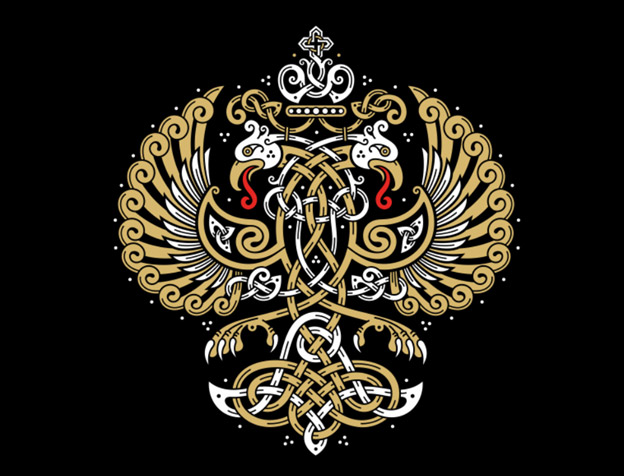
Image Source: Dribbble.com/Sergey Arzamastsev
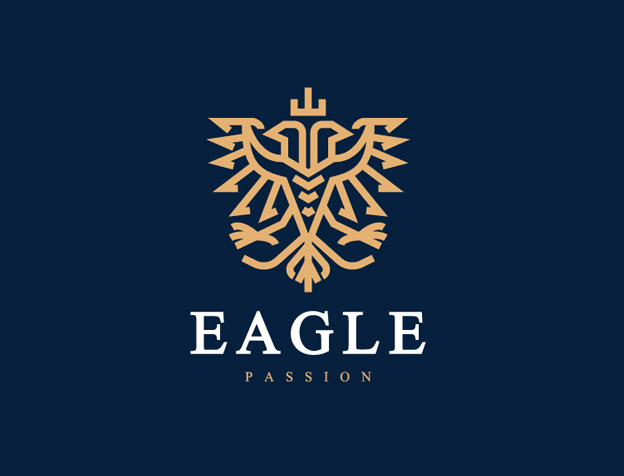
Image Source: Dribbble.com/James Wilson Saputra
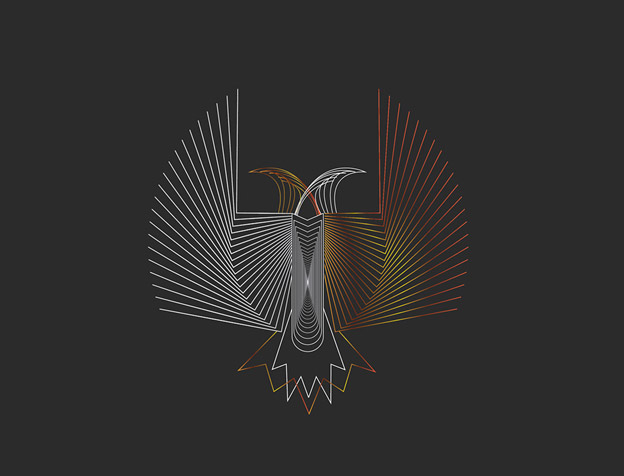
Image Source: Behance.com/James Wilson Saputra
4. The Circle
The circle is a sobering, uplifting, harmonious, and a deeply spiritual symbol. It has extensive meanings – countless. It is a symbol of purity, originality, and perfection. It also represents beginnings and ends, days and nights, life and death – the cycles of time. In numerology and mathematics, it represents zero, the perfect number that continues all other numbers.

Because of its shape, it also represents totality, wholeness, and completeness. Since every line within a circle originates and ends within its center point, the circle also represents timelessness, infinity, and continuity. You’ll be hard-pressed to find another symbol that contains as many meanings within as the circle does.
It signifies the rhythm, the movement of the universe. The sun is a circle and everything revolves around it. Even the motion of revolving is performed in a circle. It is also the movement of life. We are born frail, afraid, and dependent. The old age makes us frail again, dependent on others, and possibly afraid of death – the vast unknown. Hence, we come full circle.
The circle also represents sowing and reaping, karma, and what goes around comes around. Our actions, thoughts, words, everything contains energy. Whatever kind of energy we put into the world will come back to us. Human life is also divided into cycles of 7-years. It is a scientifically proven fact that on the cellular level, our bodies and minds change every 7 years. We become new every 7 years and it continues till we die.
The circle also represents community, protectiveness, and defense. The line around the circle denoting a protective wall, with everything of value within its field. We also see the circle as one of the most organic shapes in nature and the universe. If you’ve ever seen a tree trunk, you’ll recall that it contains circular rings – each one representing the years of the tree. From the space, all the celestial bodies look like in circular shapes. The Earth itself is beautifully round, with its gravity centered in its core and holding everything together.
So if you were looking for a soothing, calming, and spiritually perfect shape for today, we give you the mighty circle.
Circle Design Inspirations

Image Source: ZillionDesigns

Image Source: Dribbble.com/Marianna Lutková
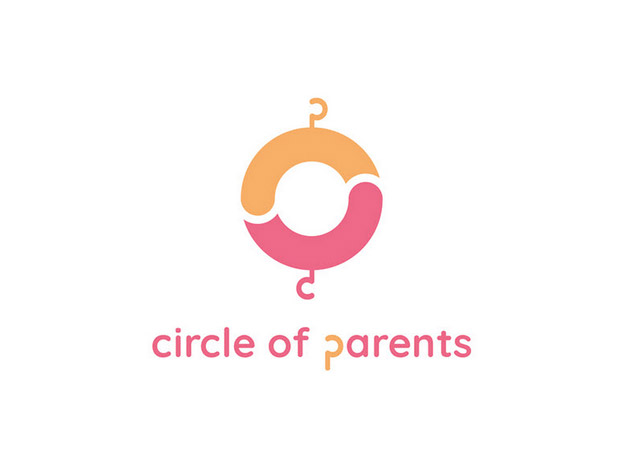
Image Source: Behance.com/Olga Butenop
5. The Ichthys Or Jesus Fish
The Jesus Fish, or as it is more officially and respectfully known, the Ichthys, is an ancient Christian symbol dating back to the 2nd century AD. Why the Early Christians adopted a fish symbol to represent their religion or religious leader, nobody can say for certain, however, speculations mount.
According to the most popular and established one, the Greek word for ‘fish’ (Ichthys) was chosen as a secret code to recognize other Christians in a time when the new religion was being persecuted by the Romans. The word Ichthys perfectly translated into English as ‘Jesus Christ, Son of God, Savior’ – the most fundamental belief upon which the whole of Christianity is built.
According to an article in Christianity Today, early Christians used to recognize each other by drawing one arc of the fish on the sand. If the other person drew the second arc, thus completing the fish, it was a sign that both were brothers in faith, and hence could rely on each other.

Other accounts emphasize the significance of the fish symbol by citing the gospel. The Gospels contain numerous mentions of fish which exalt the miracles of Jesus.
In one instance he multiplied a few loaves of bread and two fishes to feed five thousand people. Other times, Jesus attributed the process of differentiating between good and bad men as fishermen separating their good fish from the bad. As per Luke 24:41-43, Jesus was offered some grilled fish when he was resurrected in the skies.
Historians also speculate that the association of the fish symbol to Christianity has astrological roots. As per them, the astrological age in which Christianity began its origin was the age of Pisces. And what’s the astrological symbol of Pisces? A fish.
So whether you want to believe that Jesus’ dinner choice on the day of his resurrection prompted this association or was it astrology or a secret language of code, know that in modern Christianity, the Jesus Fish is fast emerging as a proud and declarative sign of the Christian faith, much more than a rosary or even the cross.
Ichthys Design Inspirations
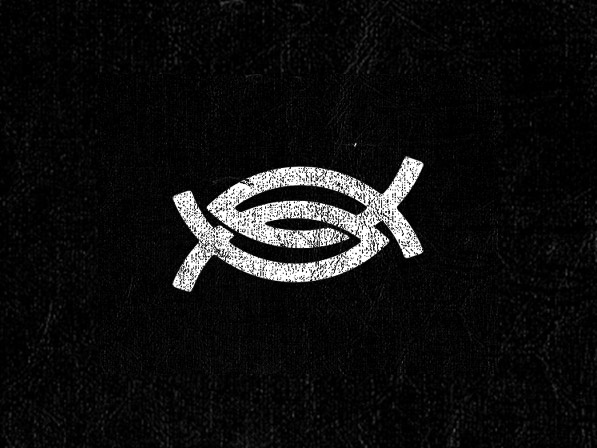
Image Source: Dribbble.com/Diego Gouvea
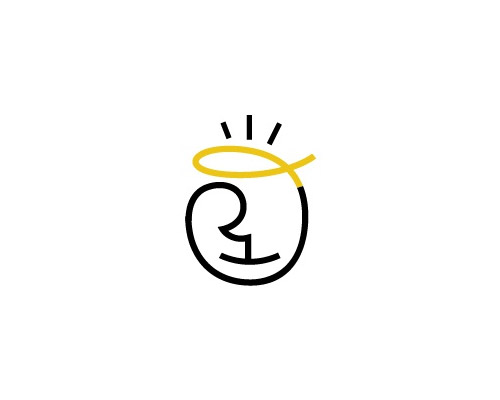
Image Source: Dribbble.com/Lindi Koprivnikar

Image Source: Dribbble.com/Damian Kidd
6. The Pi
Honestly, Pi is the most irrational symbol of the whole list!
Well, actually, no. The symbol is quite a clean mark; it’s the number that the symbol represents that’s irrational. In mathematics, an irrational number is any number that does not give us an exact fraction of any two numbers. No matter how hard you try, the numbers never give you a simple fraction, and even the digits after the decimal tend to go on forever.
Any guesses for what is the most famous irrational number? The mighty Pi.

The Pi has a value of 3.1415… and so on. The digits do not stop. This number is represented by the Greek symbol π. We use π to calculate the circumference of a circle with the help of its diameter. And it doesn’t matter how large or small the circle is, when we divide the circumference by its diameter, it’s always the value of Pi. Isn’t it neat?
But while Pi maybe a cool number and concept, why did it come to be associated with that specific Greek symbol?
The answer lies with the Swiss mathematician and physicist who one day got sick of the lengthy and vague descriptions that were being used at the time to describe the concept of Pi. So he got to researching and discovered the Greek lowercase letter π. This letter is the first letter of the Greek word ‘perimetros’ which means ‘circumference’.
Simple and no-nonsense.
Pi Design Inspirations
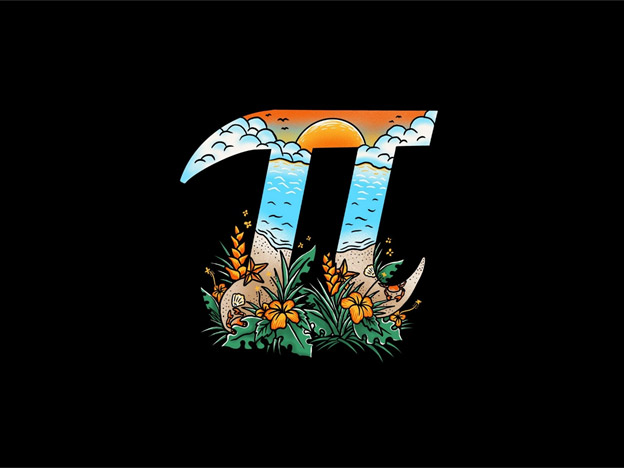
Image Source: Dribbble.com/sober artwerk
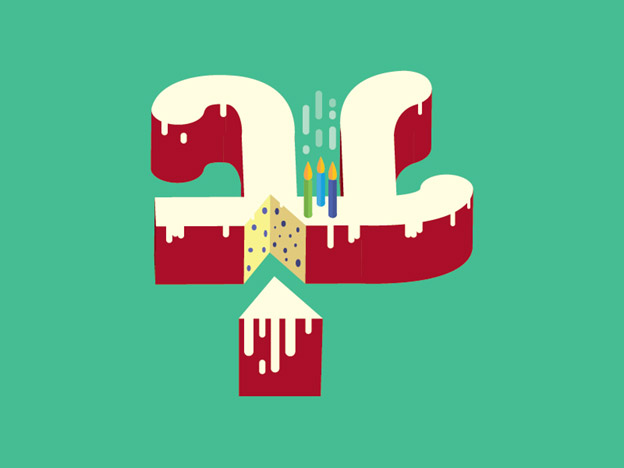
Image Source: Dribbble.com/Carl Foster
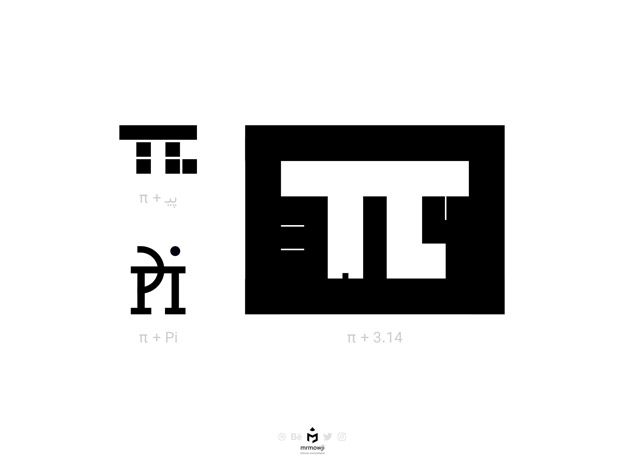
Image Source: Dribbble.com/Mojtaba Javan
7. Fleur De Lis
The fleur-de-lis, which means ‘flower of lily’, is a French symbol that consists of three petals of lilies that are joined at the base of their stem.
The symbol was an ancient icon that used to represent the French royalty and the catholic saints of France. It regularly appears as a symbol of France, though unofficially, as no French republic has ever officially adopted the symbol as a national sign.
In medieval times, the three petals of the fleur-de-lis used to represent the three estates of the society: the commoners, the nobility, and the clergy. Since France is a hugely Catholic country, the symbol came to represent not only French Cathocolism but also became an artistic, political, and emblematic symbol of France.

The Spanish monarchy, which descends from the French House of Bourbon, uses fleur-de-lis as part of its official coat of arms.
While the fleur-de-lis symbol is largely known as a French symbol, there are enough historical records to show it has meant different things at different times to different people. It was used on the war helmet of a Scythian king. It has also been used to adorn the sword of an Indian emperor, Kanishka the Great. It has also been heralded as an ancient weapon of war.
It is perhaps this association of fleur-de-lis with royalty and power that in the 18th century Mauritius, which was at the time colonized by the French, the symbol was used as a disciplining device to punish slaves who tried to run away. The symbol would be branded on their shoulders when they were apprehended. On the third attempt at escape, the captured slave would be murdered.
So if you were thinking of getting a new piece of jewelry or a new tattoo with a fleur-de-lis on it, perhaps think again? Or not. Each to their own.
Fleur De Lis Design Inspirations
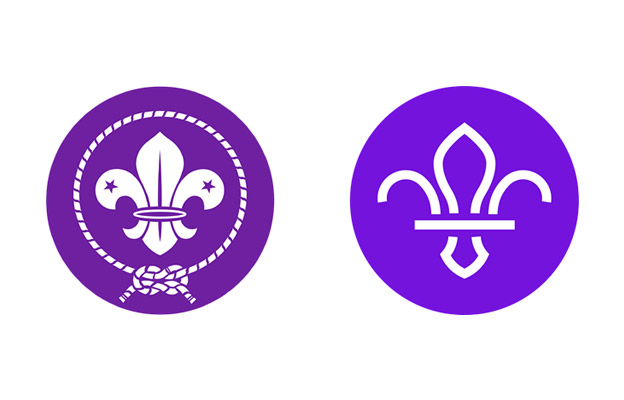
Image Source: Behance.com/Maria Srafen
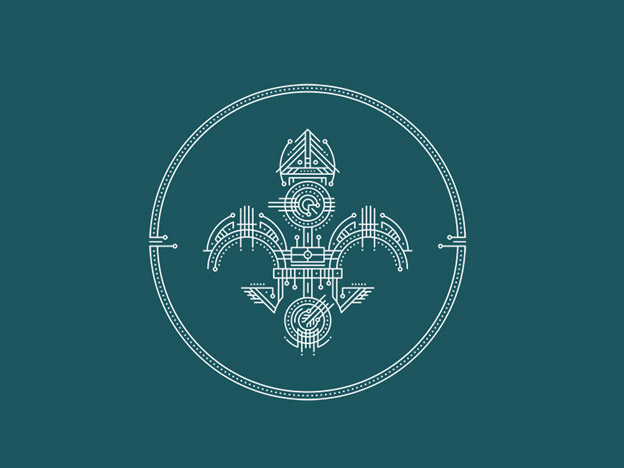
Image Source: Dribbble.com/Derek Payne
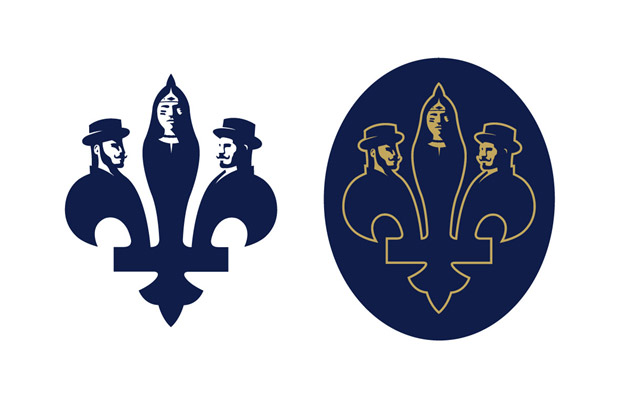
Image Source: Behance.com/Joe Baines
8. Caduceus
If there ever were a symbol that contained this much confusion and misunderstandings about its origin!
The caduceus symbol is widely and popularly known, especially in the USA, as a sign of medicine and physicians. It is the official symbol of the U.S Army Medical Corps and also adorns the flag of the Surgeon General of the U.S Army. As a logo design company, we know how much this symbol means to clients who are looking for medical logo designs. In the country, everyone recognizes the caduceus symbol as something to do with medicine, surgery, or hospital, etc.
So, where does the confusion lie?

The thing is, the symbol had never been associated with anything medical ever – in all of history. In fact, it was the Rod of Asclepius that was (and is) the true symbol of medicine and healing. The Rod of Asclepius was the staff of the Greek god Asclepius, who was the god of healing and medicine. This rod only has one serpent entwined around the rod, unlike the caduceus symbol which uses double serpents. The latter is the staff of the Greek god Hermes, the god and protector of all travelers, heralds, merchants, and orators, etc. Throughout history, quite consistently, the winged staff of Hermes has been used as a symbol of trade, neutrality, negotiation, eloquence, and wisdom.
Not medicine.
So why do we associate medicine with it, then?
Blame the U.S military that apparently didn’t know the difference between the two symbols. While the Surgeon General at the time had approved the use of the Rod of Asclepius as their symbol, people receiving the communication confused it with the Hermes staff, and the inaccurate association was born. In the ensuing years, however, instead of correcting the mistake, it was justified by saying that a whole lot of medical corps is made up of non-combative personnel and vehicles; therefore, a neutral symbol was needed to communicate to the enemy and everyone else for a safe and secure passage.
Do you buy it? Let us know when you get down to the comments.
Caduceus Design Inspirations
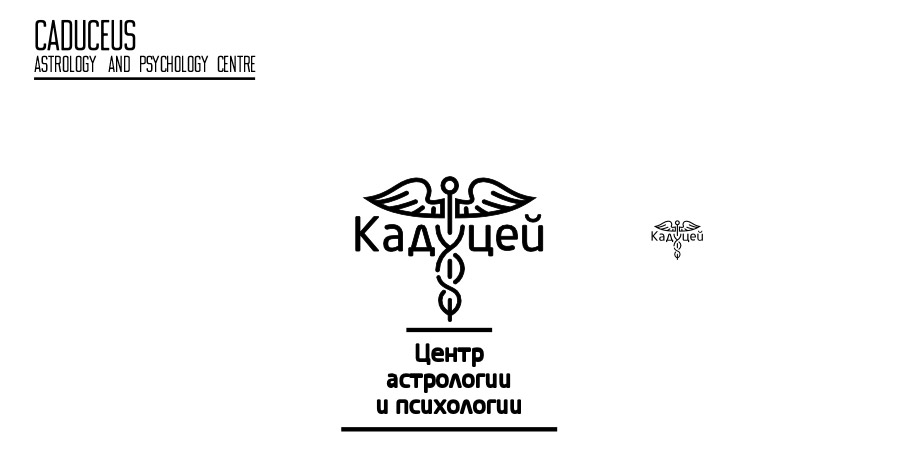
Image Source: Behance.com/Andre Reich

Image Source: ZillionDesigns
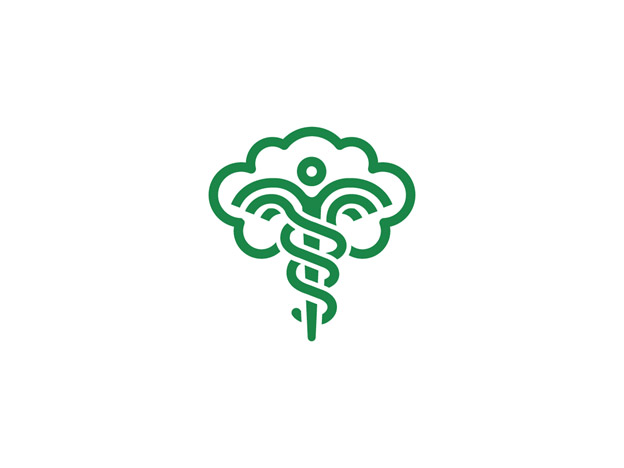
Image Source: Dribbble.com/justin saegusa
9. The Bluetooth Icon
We’re slowly inching towards the modern. And things will be a lot less murky – hopefully.
So, the Bluetooth symbol. An interesting thing about this symbol is, apart from being a representation of a modern technological/communication tool, nothing about its name or symbol is modern. The name is actually a shout-out to an ancient Viking king, Herald I, whose full name was Herald Bluetooth. Why did he have Bluetooth as his last name, you got me. Maybe it was a family name, or maybe he had a blue tooth, who knows?
But why call this technology Bluetooth? What do they have in common?
You’re about to find out.

So the story goes that in the 90s when wireless technology had become all the rage, every tech company, big or small, had gotten busy in creating its own wireless protocols and standards. Some of them were incompatible with each other and thus detrimental to the whole technology. Jim Kardach, a wireless technologies engineer at Intel, decided to address the issue.
He brought all the major competing platforms on the table, showed them how their competing protocols will help no one, and convinced them to create a single, unifying wireless technology for radio connectivity. Everyone agreed (well, duh, or we wouldn’t have been talking about it).
While Kardach began working on such a unifying technology, he decided to call it Bluetooth, after the Scandinavian king. Why? Because much like Kardach’s unifying technology, Bluetooth was also a unifying agent. Thousands of years ago, he had managed to bring together parts of Norway and Denmark and fused them into one nation.
Thus, the technology got its name. What about the symbol then? Well, the symbol is the initials of the king’s name written in Scandinavian runes.
Bluetooth Design Inspirations
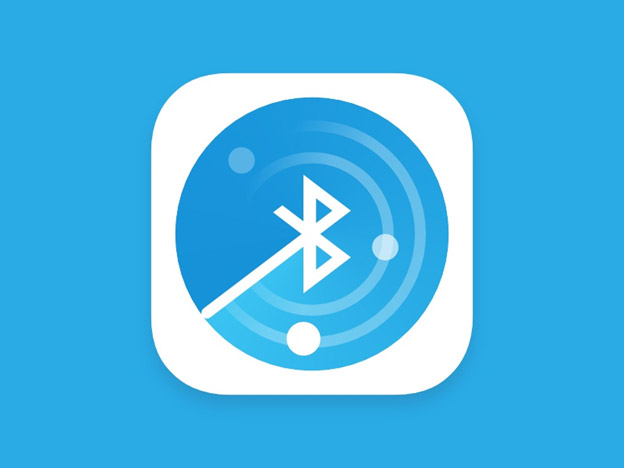
Image Source: Dribbble.com/Northwood
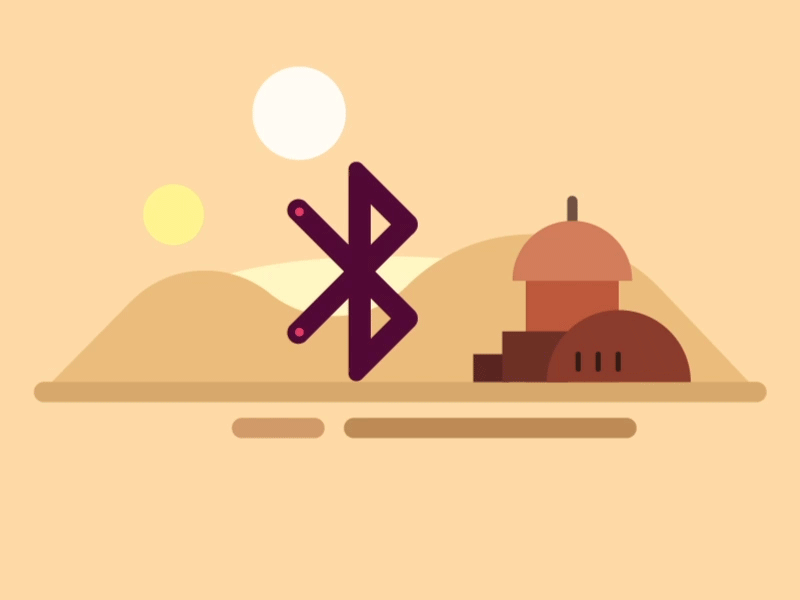
Image Source: Dribbble.com/Dhananjay Garg

Image Source: PNGTree
10. The Power Sign
The on/off sign is also popularly known as the power switch. It consists of a vertical line and a circle. The vertical line indicates that the device is on whereas the circle is used to turn off the device.
It can be on a toggle switch that you can flip on or off, or it can be on a soft surface like a laptop where you can alternate between the two states just by pressing the button. It can also be completely digital – much like on the Start menu of your computer.
So, how come a vertical line and a circle came to symbolize the power button?
It has to do with the Binary system.

The vertical line on the power symbol is actually not a line at all; it’s a stylized 1. And the circle is not a circle – it is a zero. See, when technology was becoming more global, scientists and engineers needed a universal graphical symbol that could transcend language and be understandable to all people. Therefore, the International Electrotechnical Commission (IEC) came up with a universally agreed-upon power symbol: 1 and O.
In the Binary system, the number 1 stands for True, so it was assigned the value of On, and O means False, so it was assigned the value of Off.
But here’s a bit of catch. The symbol that we currently and popularly take to mean as the power symbol – a vertical line within a broken circle – is not the power symbol at all. It is actually the IEC symbol of Standby. The Standby is a power mode that will run your device on low power or make it fall asleep. In most modern computers, this symbol represents the Sleep mode. If you want to completely cut the power off from your device – or shut it down – pressing this button will not do the job. In some instances, it can be a safety hazard.
To clear this ambiguity, some organizations have pushed for a distinction between a powered-/-off and an on-low-power symbol. Therefore, the IEC now recognizes the vertical line within a full, unbroken circle as the on/off switch – press it once to switch the device on and then press it again to shut it off.
The line within a half-finished circle remains the symbol of Standby or Sleep mode – but that’s changing fast. Modern technology has started using a crescent moon symbol to symbolize sleep mode. However, you can use both buttons for the same purpose. So if you cannot see a crescent moon on the laptop you’ve just purchased, look for a single line inside a broken zero.
Power Sign Design Inspirations

Image Source: ZillionDesigns
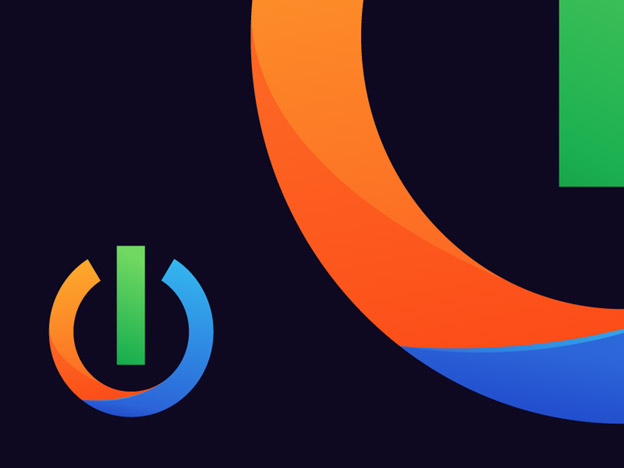
Image Source: Dribbble.com/Roach Design Co.
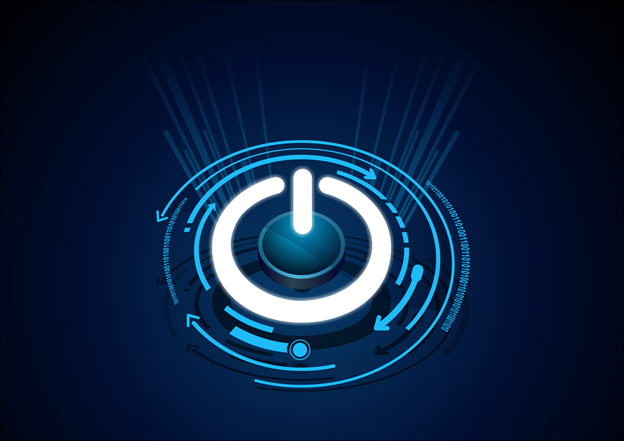
Image Source: ZillionDesigns
The Sum Up
So there you have it – ten more popular symbols and their origin stories explained. Which one did you find the most interesting, and how many you knew already? Do let us know in the comments.
Plus, sound off below if you want us to do a part three.


